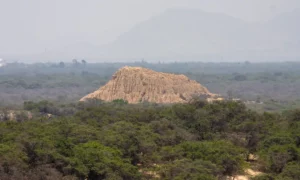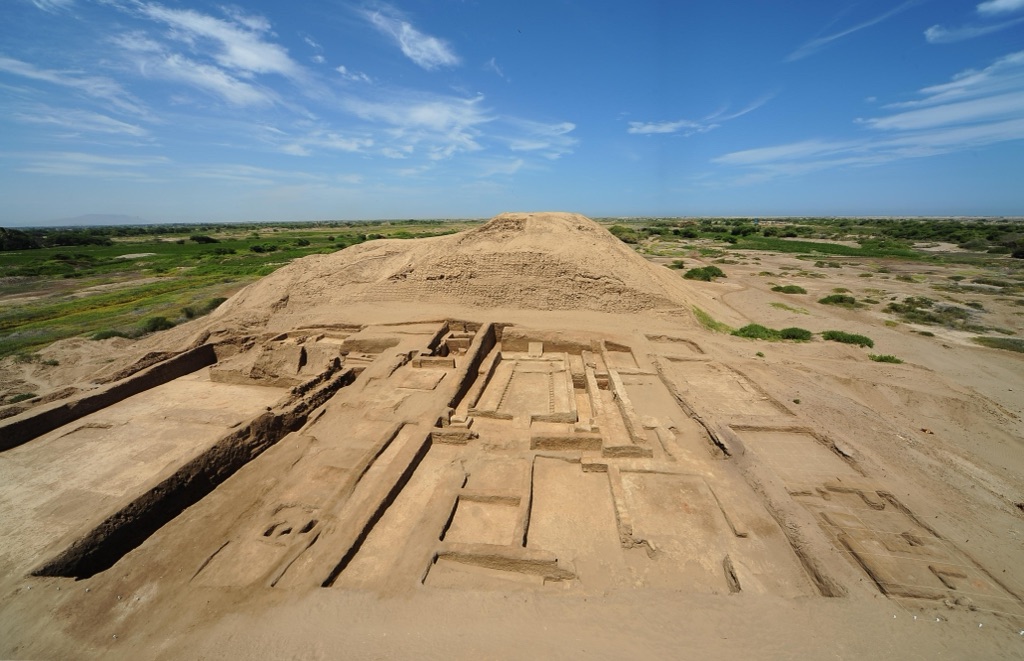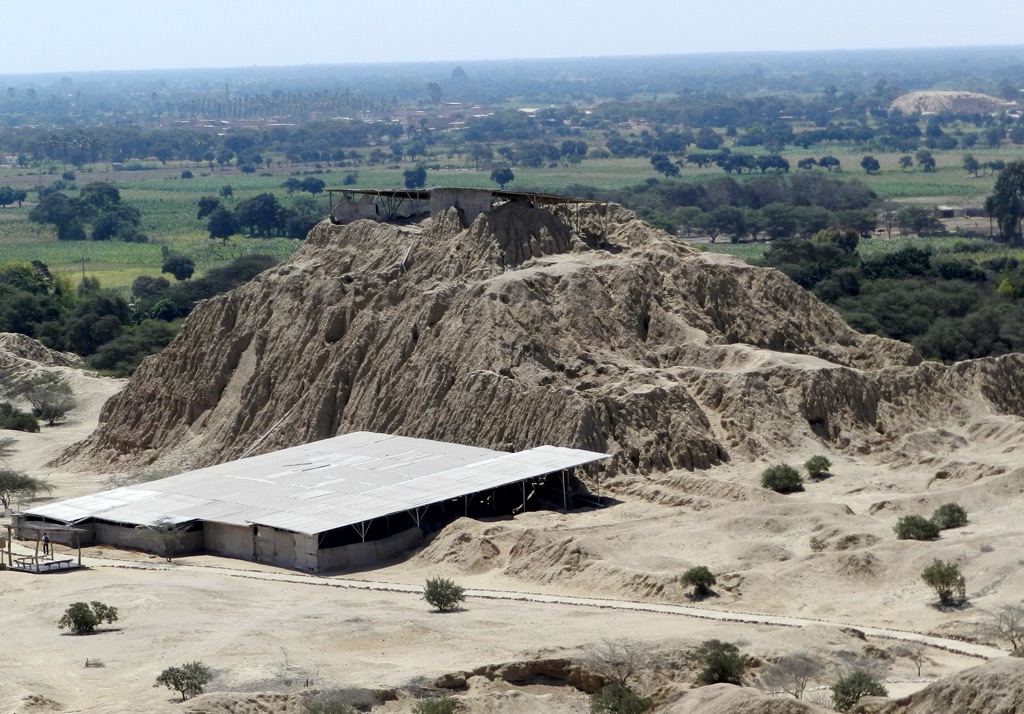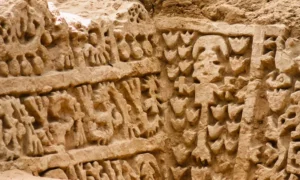Huaca Las Balsas, a significant archaeological site within the monumental complex of Túcume, offers profound insights into the maritime mythology of the Lambayeque culture (Sican Culture). Situated in the rural district of Túcume, Lambayeque Province, on the north coast of Peru, this site is part of a larger ensemble of pyramids surrounding Cerro Purgatorio. The name “Huaca Las Balsas” translates to “Shrine of the Rafts,” a title derived from the discovery of mud reliefs depicting mythological characters aboard rowing vessels amidst a marine setting. These findings underscore the Lambayeque culture’s deep connection with the sea, a theme recurrent in their mythology and artistic expressions.
Sican culture
The Sican culture, also known as the Lambayeque culture, was a significant pre-Columbian civilization that flourished on the north coast of Peru, particularly in the Lambayeque Valley, between approximately 750 and 1375 AD. This civilization emerged following the decline of the Moche culture and was eventually absorbed by the expanding Chimú Empire. The Sican culture is renowned for its distinctive metalwork, especially in gold, and its contributions to the Andean cultural mosaic.
One of the major moments in the timeline of the Sican civilization was the transition from the Middle Sican period (900–1100 AD) to the Late Sican period (1100–1375 AD), which was marked by significant changes in social structure, architecture, and art. This transition is often associated with a major environmental event, possibly an El Niño, which led to a shift in the political and economic power within the region. The Late Sican period saw the construction of monumental architecture, including large temples and pyramids, which served as both religious and administrative centers.
Religion played a central role in Sican society, with a pantheon of gods that included deities associated with the moon, sea, and weather, reflecting the civilization’s deep connection to its coastal environment. The Sican deity often depicted in their art is the “Sican Lord” or “Lord of Sican,” a figure shown with a winged eye-mask and associated with agriculture, fertility, and water. This deity’s representations in gold and other materials underscore the importance of metallurgy and craftsmanship in religious practices.
Social and daily life in the Sican culture was highly stratified, with a clear division between the elite and the common people. The elite class, including rulers, priests, and high-ranking warriors, lived in large compounds and had access to luxury goods, such as fine ceramics, textiles, and ornate jewelry. In contrast, the common people lived in smaller, simpler dwellings and engaged in agriculture, fishing, and crafting. The Sican economy was based on a mix of agriculture (notably the cultivation of maize and beans), fishing, and trade, both within the Andean region and possibly extending to Mesoamerica.
The governance of the Sican culture is not fully understood, but it is believed to have been a theocratic society led by a powerful priest-king or a series of such rulers. These leaders wielded both religious and political power, overseeing the construction of temples and the conduct of major religious ceremonies. There is, however, limited specific information about individual rulers, kings, or queens within the Sican civilization, as the culture’s writing system, if it existed, has not been deciphered.
The Sican people were skilled metalworkers, and their goldsmithing techniques were among the most advanced in the pre-Columbian Americas. They produced intricate jewelry, ceremonial objects, and funerary masks using a technique known as lost-wax casting. These artifacts, often adorned with religious and symbolic imagery, highlight the Sican’s sophisticated understanding of metallurgy and their belief in an afterlife where such items would be needed.
While there is evidence of conflict and warfare in the Sican culture, including fortified settlements and weapons, detailed records of specific wars and battles are scarce. The threats they faced likely included rival groups and environmental challenges, such as droughts or floods. The eventual decline of the Sican civilization in the late 14th century was due in part to environmental changes, internal strife, and the expansion of neighboring cultures, notably the Chimú Empire, which absorbed the Sican territory into its own expanding domain.
The legacy of the Sican culture is preserved in its stunning artifacts, monumental architecture, and the archaeological sites that continue to be explored today. The discovery of the royal tombs at Batán Grande, including the tomb of the “Lord of Sican,” has provided invaluable insights into the civilization’s social hierarchy, religious beliefs, and artistic achievements. Through these discoveries, the Sican culture remains a testament to the complexity and richness of pre-Columbian civilizations in the Andes.

Batán Grande
Batán Grande, a historical site of monumental significance, nestles in the arid landscapes of northern Peru. Known for its rich cultural heritage, it stands as a testament to the sophisticated metalworking of ancient civilizations. The site, part of the larger Sicán National Sanctuary, is famous for its archaeological remains, including pyramids, plazas, and tombs. It offers invaluable insights into the Sicán or Lambayeque culture, which flourished from around 900 to 1100 AD. Batán Grande is a treasure trove for historians and archaeologists alike, revealing the complexities of pre-Columbian societies in South America.

Chotuna Chornancap Archaeological Complex
The Chotuna Chornancap Archaeological Complex is a significant pre-Columbian site located in the Lambayeque region of Peru. It encompasses a series of pyramids, plazas, and tombs that date back to the Sicán culture, which thrived from approximately 750 to 1375 AD. The site is notable for its grand architecture and the valuable artifacts discovered there, which provide insights into the religious and political systems of ancient Andean civilizations. The complex has been a focal point for archaeological studies, revealing a rich tapestry of cultural heritage and historical significance.

Tucume Pyramids
The Tucume Pyramids stand as a testament to the Lambayeque culture’s architectural prowess. Nestled in the arid landscape of northern Peru, this ancient site spans over 220 hectares. It’s home to 26 major pyramids and mounds. The main pyramid, Huaca Larga, is one of the largest monuments of its kind in South America. Visitors can explore the complex network of platforms, plazas, and intricate adobe friezes. These reveal tales of a civilization that thrived from about AD 1000 until the Inca conquest.

